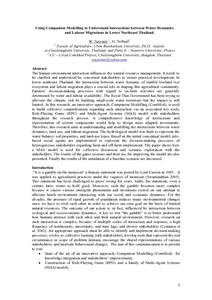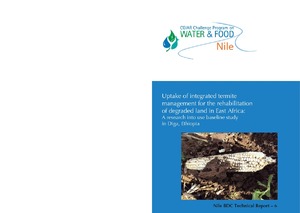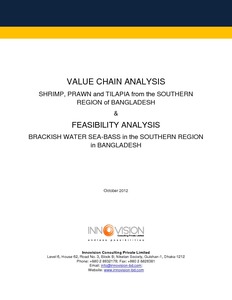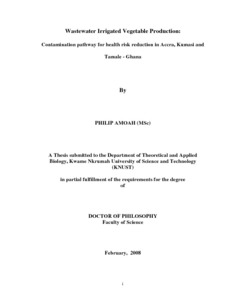Using companion modeling to understand interactions between water dynamics and labor migrations in lower northeast Thailand
Validating the Soil Conservation Service Triangular Unit Hydrograph (SCS-TUH) model in estimating runoff peak discharge of a catchment in Masvingo, Zimbabwe
The knowledge of runoff discharged by a catchment at its outlet is important for water accounting and water allocation to competing uses. Runoff generated by a catchment is important in determining the catchment water balance, estimating pollutant loads, and quantifying sediment yield and delivery ratio. The Soil Conservation Service triangular unit hydrograph (SCS-TUH) model was used in this study to simulate water discharged into Siya Dam from Rosva River Catchment in Masvingo Province, Zimbabwe.
Utilisation de l'eau tritiee dans la recherche sur l'elevage en Afrique: Theorie, application, methodologie et lacunes potentielles de la technique
Presents a theoritical outline of the techniques in the use of tritiated water (HTO) which can be used to estimate total body water, body composition, water turnover, milk intake and feed intake. Highlights its potential errors and gives a comprehensive methodology for the use of tritiated water under field conditions.
Uptake of integrated termite management for the rehabilitation of degraded land in East Africa: A research into use baseline study in Diga, Ethiopia
Using datasets from the Internet for hydrological modeling: an example from the Kucuk Menderes Basin, Turkey
Public domain datasets are freely available on the Internet are easy to obtain, and often more up-to-date than those from local sources. This simplifies the modeling process and increases the ability to model basins anywhere in the world, from anywhere with Internet access. Although not all types of data are available, and some conversions may be needed, the information provided does allow for quick and easy simulations of basins. The Semi-Distributed Land-Use Runoff Process (SLURP) hydrological model has been designed to take advantage of such data sources.
Value chain analysis: Shrimp, prawn and tilapia from the southern region of Bangladesh and feasibility analysis: Brackish water sea-bass in the southern region in Bangladesh
The WorldFish Center is implementing the FtF Aquaculture Project in 20 southern districts in Bangladesh. The project is implemented under USAID’s Feed the Future initiative in collaboration with the Government of Bangladesh.
Wastewater irrigated vegetable production: Contamination pathway for health risk reduction in Accra, Kumasi and Tamale: Ghana
Water for wealth and food security: supporting farmer-driven investments in agricultural water management. Synthesis report of the AgWater Solutions Project.
Water as an economic good: a solution, or a problem?
Discusses the potential opportunities and pitfalls of introducing market forces into the process of water allocation. Proposes several preconditions for beneficial privatization of water allocation and argues for a more sophisticated form of analysis than that generally allowed by proponents of basic needs or of free market approaches.





